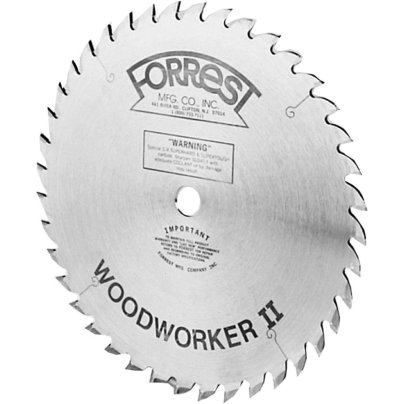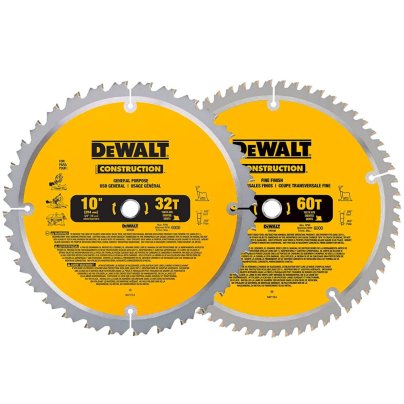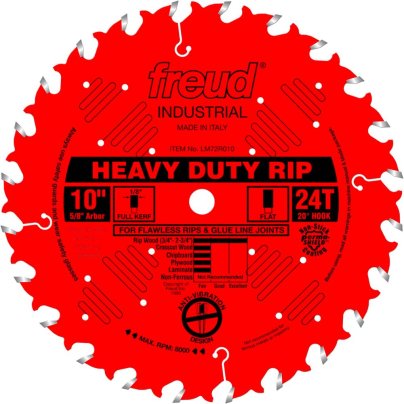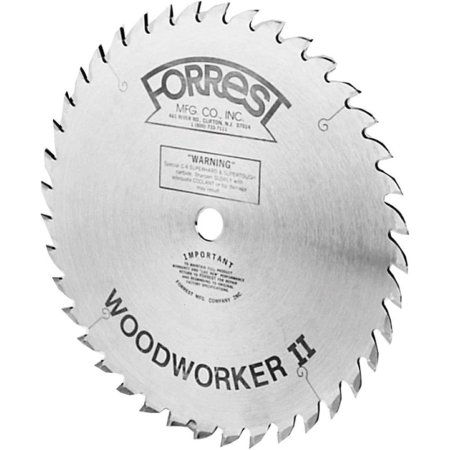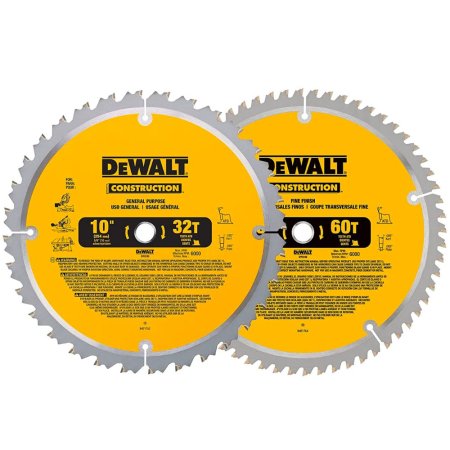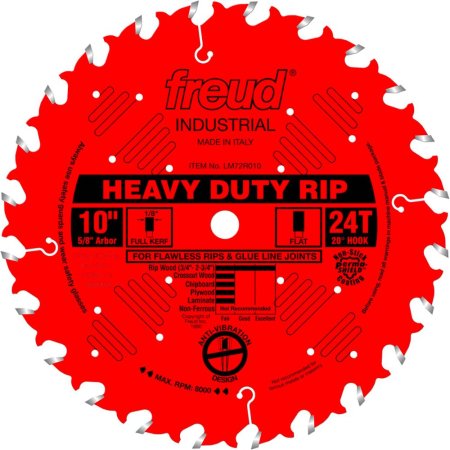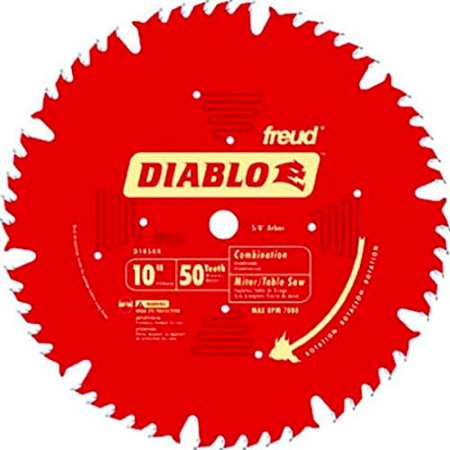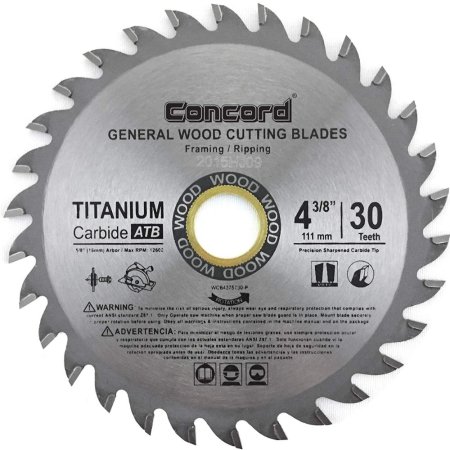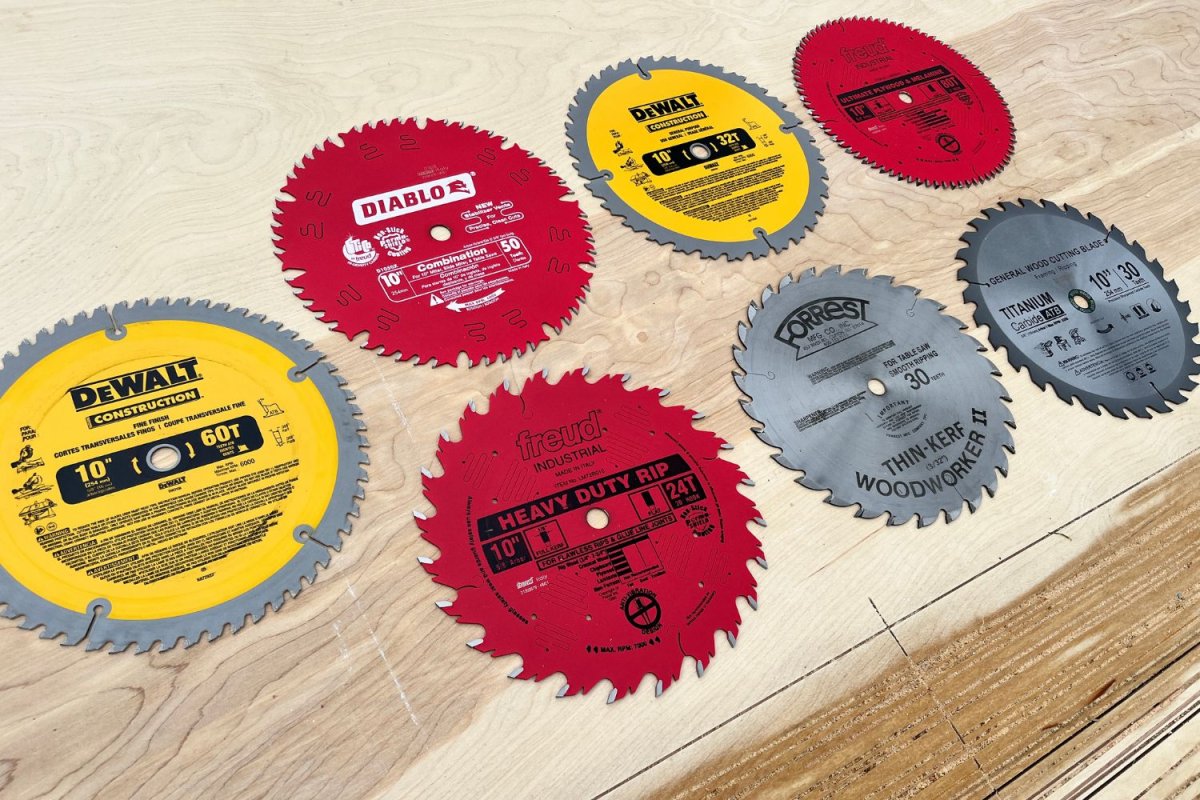
We may earn revenue from the products available on this page and participate in affiliate programs. Learn More ›
While a good table saw makes large jobs easier and more accurate when it comes to cutting wood, a good blade is a thing of beauty. A high-quality blade used for the right job can help you achieve the intended results, but the wrong blade can quickly ruin a DIY project or let the smoke out of your table saw.
Stroll through the saw blade section of the tools department in your local home improvement store and you’ll soon realize that you have many options to consider. Selecting the right blade for your type of table saw and your projects can be confusing. To make it easier, we hand-tested some of the best table saw blades on the market and are sharing the results below.
Whether you need a high-quality all-purpose blade to cover all your needs or a specialty blade for making ripping lumber more efficient, read on to learn about some of the best options available, so you can make the best choice.
- BEST OVERALL: Forrest WW10307100 Woodworker II 10″ Saw Blade
- BEST BANG FOR THE BUCK: DeWalt 10″ Miter/Table Saw Blades, Combo Pack
- BEST FLAT-TOOTH RIPPING: Freud LM72R010 10″ 24-Tooth FTG Ripping Saw Blade
- BEST COMBINATION: Diablo by Freud D1050X 10″ 50-Tooth Combo Saw Blade
- BEST ROUGH-CUT BLADE: Concord Blades 4⅜” 30-Tooth Saw Blade
- BEST FOR PLYWOOD: Freud LU80R010 10″ 80-Tooth Ultimate Plywood Blade
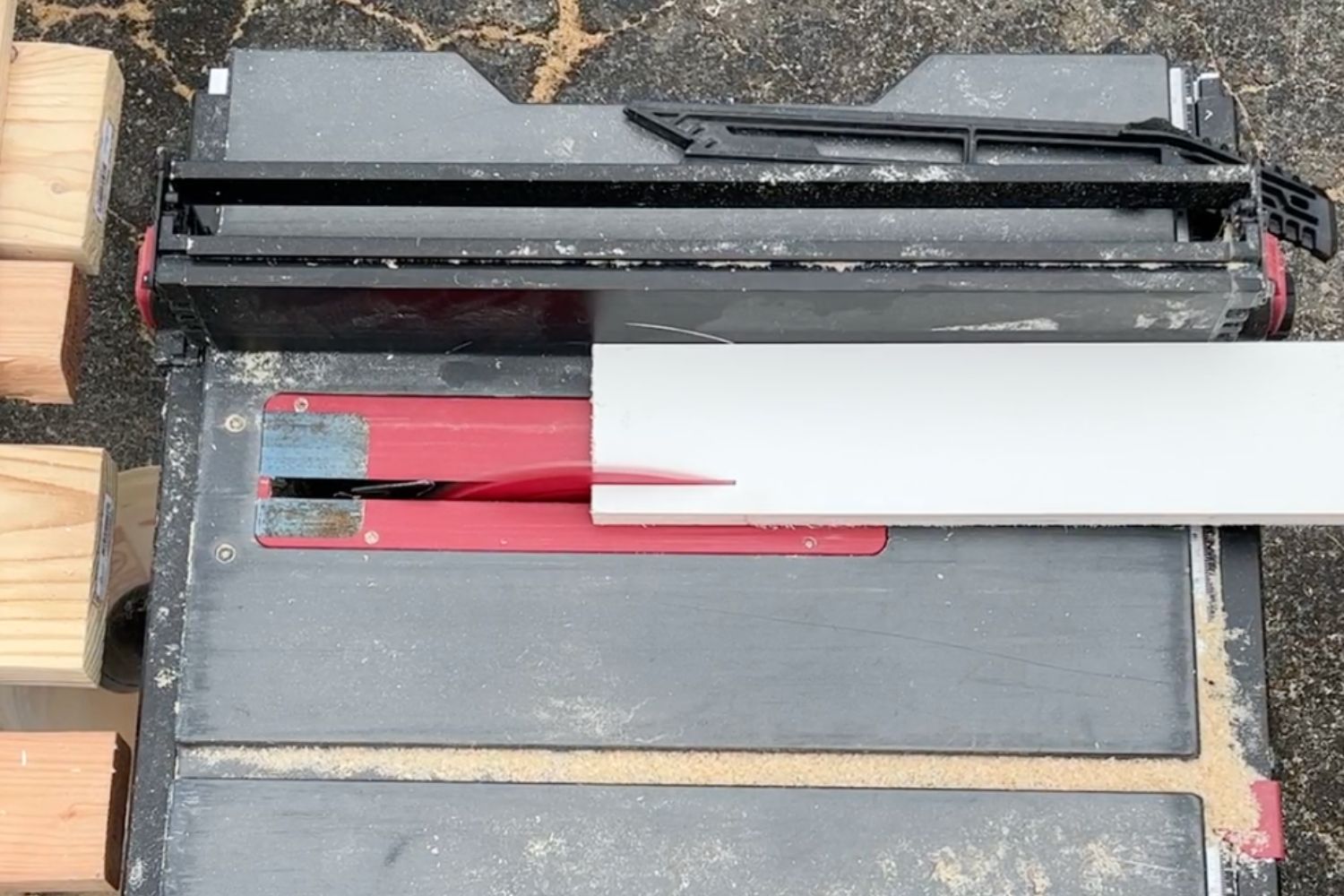
How We Tested the Best Table Saw Blades
We looked for three main things in this review: quality of cut, low vibration, and edge crispness. When building up the trim on a job site or making woodworking projects at home, we looked for blades that delivered edges with no tear-out and that were ready—or near ready—for paint.
We also looked for tooth configurations, the carbide quality, and the general sharpness that produced those cuts without overly taxing the saw in finger-jointed primed pine, solid sawn red oak, maple plywood, and framing lumber.
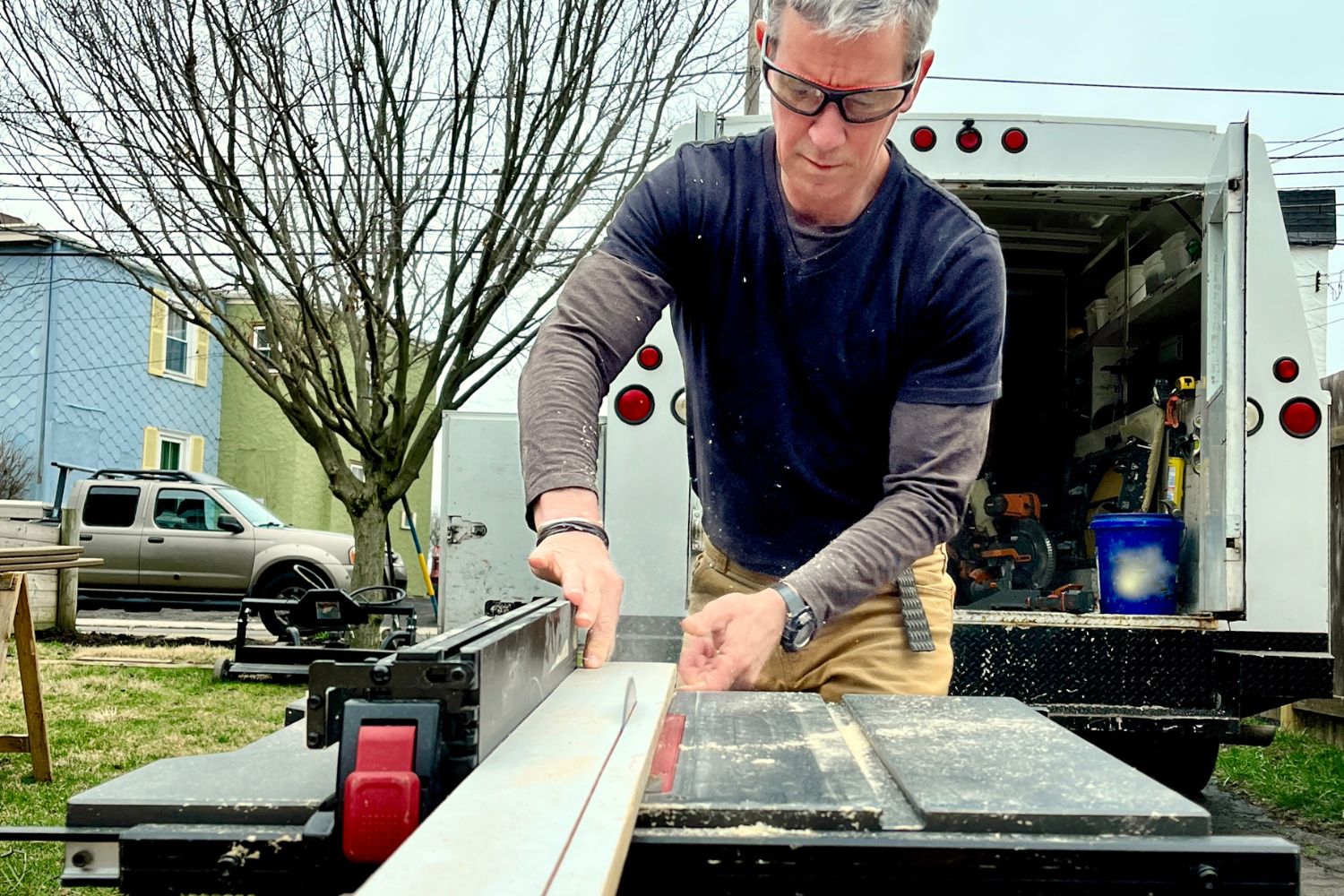
Our Top Picks
From some of the best all-purpose saw blades that can handle various cutting demands to some of the best specialty blades to cut grooves and rip boards, we field-tested some of the best table saw blades on the market in order to make it easier for you to pick the right one for your work. For saw blades that will make the most of your time behind the table saw, make the most of the work you’re doing and the things you’re making, and make the most of your budget, take a look at these blades. Read on to consider the hands-on reviews of some of the highest-rated table saw blades.
Best Overall
Forrest WW10307100 Woodworker II 10" Saw Blade
Pros
- Compared to similar options, this blade provides the cleanest, quietest cut
- Lowest chatter and tear-out in our list of recommendations
- Super-supportive company; can resharpen blades and restore to factory specs for users
Cons
- Most expensive blade in the group due to added benefits and features
Product Specs
- Tooth configuration: Alternate top bevel
- Carbide: C-4
- Blade plate: Uncoated
While the price for this top-of-the-line Forrest table saw blade might seem excessive, its high performance and multiuse capability make it worth the extra cost. With its alternate top bevel tooth configuration, this blade performs both the smoothest rip cuts and crosscuts of the blades tested.
Although it left micro-swirls on the edges of finger-joint pine, they were barely visible. A nice steady feed rate makes glue-line joints possible. It has hand-brazed C-4 carbide teeth, and Forrest will not only resharpen the blade when needed, the company will bring it back to factory specs for much less than the cost of a new blade. Over time, there is great value there, because the user will always have a top-drawer blade. It even ships with an excellent guide for setting up a table saw; we can feel the people behind this product. Its price tag is higher, but there’s more blade for the buck and service to boot.
Get the Forrest table saw blade at Amazon, Acme Tools, or Forrest.
Best Bang for the Buck
DeWalt 10" Miter/Table Saw Blades, Combo Pack
Pros
- The finish blade was clean and quiet, leaving only micro swirls behind
- Both blades ran smoothly, leaving little chatter on the trim boards
- Construction blade blew through knotty Douglas fir framing lumber
Cons
- Less carbide on the teeth; may wear faster relative to other more robust options
Product Specs
- Tooth configuration: Alternate top bevel
- Carbide: Tungsten carbide
- Blade plate: Uncoated
These DeWalt blades are priced at just a fraction of other blades, offering the best deal we could find when it comes to outfitting a table saw in this test group—and both blades in this two-pack perform really well. The 60-tooth fine-finish blade is just that. It leaves only micro-swirls in finger-joint pine, and its cuts are nearly jointer-smooth in maple plywood with zero tear-out. This blade can even handle plowing through the occasional 2×4, though it really draws on the tool to do this.
The computer-balanced trim blade was the third smoothest in the group tested. The 32-tooth construction blade handles that 2×4 just fine and leaves clean, passable cuts for paint-grade trim in finger-joint pine. It swirled up red oak edges and delivered no tear-out cuts in maple plywood.
Get the DeWalt miter/table saw blade at Amazon, The Home Depot, or Acme Tools.
Best Flat-Tooth Ripping
Freud LM72R010 10" 24-Tooth FTG Ripping Saw Blade
Pros
- Outstanding carbide and tooth configuration; ideal for heavy-duty work
- Features a full kerf with expansion slotted blade plate
- Delivers glue-line joints, even on a benchtop table saw
Cons
- Purpose-built for ripping only; not an all-around option
Product Specs
- Tooth configuration: Square top, ripping
- Carbide: High-density titanium cobalt carbide
- Blade plate: Coated
This blade is purpose-built for serious ripping and glue-line joints. Featuring a full ⅛-inch thick kerf with an expansion slotted blade plate, the square top carbide teeth on this unit are huge and super sharp. For woodworkers who break down rough-sawn lumber, this is a blade to look at. With the saw set up correctly, it’ll plow through hardwoods with minimal vibration and leave cuts straight and smooth enough that they can be glued together.
The blade’s 24 teeth are made of high-density carbide that Freud refers to as its “ripping blend,” meaning it will last longer and hold up better whether cutting softwoods or hardwoods. The extra-large flat tooth design leaves a smooth finish and eliminates the need to sand or joint. Its Silver I.C.E coating on the blade plate resists buildup from the sticky pitch in lumber.
Get the Freud ripping table saw blade at Amazon or Acme Tools.
Best Combination
Diablo by Freud D1050X 10" 50-Tooth Combo Saw Blade
Pros
- Outstanding tooth configuration in 10 sets of 5 for a total of 50
- Thin kerf allows for less wasted wood and less sawdust
- Delivers low-vibration, crisp cuts; great for most table saw projects
Cons
- Might not be ideal for lots and lots of ripping
Product Specs
- Tooth configuration: Combination, clusters of 4 ATB teeth with a square top raker
- Carbide: High-density titanium cobalt carbide
- Blade plate: Coated
Sitting right in the sweet spot between ripper and crosscut is the Diablo by Freud, which makes for an excellent combo blade. The Diablo breaks up its 50 teeth into 10 sets of five. Each group includes closely set teeth angled just aggressively enough for ripping while still maintaining a smooth finish for cross-cutting. It was the second-smoothest running blade in the group and left minimal chatter on the wood we ran through it.
The large gullets that separate each group help clear larger amounts of material than a dedicated finish blade when making rip cuts. The laser-cut stabilizer vents trap noise and vibration, which keeps it cool and reduces blade vibration. Laser-cut heat expansion slots allow the blade to expand due to heat buildup, which holds the cut true and straight. Add to that its durable shock-resistant carbide construction, and this is a blade that’s ready to take on the lion’s share of the table saw’s workload.
Get the Diablo table saw blade at Amazon, The Home Depot, Acme Tools, or Northern Tool + Equipment.
Best Rough-Cut Blade
Concord Blades 4⅜" 30-Tooth Saw Blade
Pros
- Can process 2×4 lumber very quickly without wearing out the saw
- Thin kerf helps provide accurate cuts without much waste
- Delivers low vibration in tough cuts for easier control
Cons
- Built for speed, not for smooth cuts
Product Specs
- Tooth configuration: Alternate top bevel
- Carbide: Titanium carbide
- Blade plate: Uncoated
Concord’s general-purpose blade works well on softwoods but is even tougher on hardwoods. Thin kerf, ATB with wide gullets, and 30 teeth are for framing and ripping; there’s no need to even check and see if it leaves a clean cut because that’s not what it’s for. This blade is meant for one thing: production ripping in softwood lumber on a job site. This professional-quality construction-grade blade excels at ripping and crosscutting thick hardwoods up to 3½ inches thick and softwoods up to 1 inch thick.
It plowed through Douglas fir 2×4 and hardly taxed the saw at all. It left a rough edge, but the cuts it produces are meant to be buried behind drywall. It works as it should and does so well. When it gets dull, toss it and get another one; given how affordable it is, it’s a high-performing option that you won’t mind replacing.
Get the Concord Blades table saw blade at Amazon.
Best for Plywood
Freud LU80R010 10" 80-Tooth Ultimate Plywood Blade
Pros
- High ATB premium carbide that can last through heavy use
- Purpose-built for premium materials such as fine plywood and hardwood moldings
- Coated blade plate helps reduce blade drag and makes work easier
Cons
- Good tools like this blade aren’t cheap; this one is noticeably pricier than other options
Product Specs
- Tooth configuration: High alternate top bevel
- Carbide: Premium TiCo high-density carbide crosscutting blend
- Blade plate: Coated
The more premium and/or brittle the material one is cutting—fine plywood, hardwood moldings, and melamine—the more tear-out is noticed and as unwelcome as it is, can be harder to repair. Therefore, a blade’s tooth geometry needs to be more dialed into these specifics in order to minimize these problems. Freud’s ultimate plywood and melamine blade with 80 teeth with 2-degree hook angles, shallow gullets, and high alternate top bevel tooth configuration delivers. Although it’s better at crosscuts than rips, it’ll still rip extremely well.
Additional premium features—including anti-vibration slots to dissipate heat and Freud’s nonstick-finish coating to reduce blade drag—help to make work easier. Topping things off are the big, super-sharp, gnarly carbide teeth—truly a thing of beauty.
Get the Freud plywood table saw blade at Amazon, Acme Tools, or Ace Tool.
Jump to Our Top Picks
What to Consider When Choosing a Table Saw Blade
Determining which table saw blade is right for your needs can be overwhelming. Read on to learn about the factors to consider before making a purchase.
Types of Table Saw Blades
Understanding how saw blades meet specialized needs is crucial to picking the right one for the job. Below are some common types of saw blades you can buy.
Crosscut
First, it should be pointed out that while there is some crosscutting in table saw use, the majority of cuts made on table saws are rip cuts that run along the length of the board. Some woodworkers crosscut, but that often requires jigs and rigs that the typical garage woodworker, DIYer, and even contractor doesn’t use, so the emphasis in this article is heavily skewed to performance in ripping applications.
Manufacturers design crosscut saw blades to make smooth cuts across the wood’s grain. These saws have more teeth. A 10-inch crosscut blade may have 60 to 80 teeth, allowing it to make more cuts with each revolution than a ripping or a combination blade.
With fewer spaces between the teeth, crosscut blades remove less material, resulting in a smoother cut. It also means it takes these blades longer to move through wood. Crosscut blades are the go-to choice for finish carpentry and other applications that require precision and a smooth finish.
Flat-Tooth Ripping and Rip-Only
Ripping blades are designed to cut along or with the grain of the wood. Since it’s easier to cut with the grain than against it, these blades feature flat teeth configurations that can quickly remove larger pieces of wood fiber. Ripping blades typically have 10 to 30 teeth with more severe tooth angles of at least 20 degrees.
Fewer teeth on the blade allow for larger gullets (the space between each tooth) for faster stock removal. While this design makes ripping blades ideal for rip cuts, they are not ideal for crosscuts since they produce too much tear-out, (the amount of wood removed with each cut). This type of blade is sometimes ideal for shop settings where crisp cuts and super-flat edges are required or, conversely, the rough carpentry job site where plowing through stock quickly is the name of the game.
Combination and Alternate Top Bevel (ATB)
General-purpose combination blades and blades with an ATB configuration can handle both crosscuts and rip cuts and can often be used on both miter and table saws. These blades find a middle ground between crosscut and ripping blades with 40 to 80 teeth. While they may not be the best blade for ripping or crosscuts, they can do both effectively.
To quickly identify a combination blade, you’ll see sets of teeth with small gullets, then one large gullet followed by the same series of teeth. ATB blades are harder to spot but are the most common by far. Their tooth geometry comes from hand saws where each tooth is flared to one side of the blade plate or the other, left, right, left, right uniformly around the blade—or, in the case of a hand saw, along the blade plate.
Dado
A dado blade is a specialty blade used to create wide grooves in wood for shelving, door panels, inlays, and drawers. Whereas other saw blades consist of one flat metal blade, dado blades come in two different designs: stacked and wobble.
Stacked blades consist of multiple cutters and spacers sandwiched together to create a wider profile. Manufacturers configure stacked blades with rip-style teeth and spacers in the middle and crosscut blades outside. This setup allows the blade to remove large amounts of material while maintaining a smooth cutline along the groove’s edges.
Wobble blades rotate in an offset pattern to cut wide grooves as they spin through the wood. Wobble blades include an adjuster that alters the width of the wobble. Although wobble blades don’t offer the same quality cut as a stacked blade, they are usually lower priced.
Job Type
Most DIYers can get away with a single combination blade for all of their project needs. Combination blades make both rip cuts and crosscuts while leaving edges clean enough to meet most project demands. Combination blades can also reduce the added cost of buying multiple blades, and they also save time by eliminating the need to switch the blades between cuts.
Ripping, crosscut, and dado blades offer more specialized cutting and are must-haves for many woodworking projects such as furniture, cabinetry, and built-ins. Carpenters use them too for building up trim assemblies or milling custom trim for, say, a feature wall. For jobs that involve a lot of ripping, a dedicated ripping blade might save time and increase the potential for the desired outcome. A rip-cut blade is also ideal for cutting hardwoods as it will cut through this tougher material without dulling as quickly.
Though crosscuts are primarily done on a miter saw, some woodworkers like to use the miter gauge and fence on the table saw for certain cuts or use a jig called a crosscut sled, so keep a crosscut blade handy for ultra-smooth cuts like box joints. Crosscut blades offer the cleanest cutting edge, making them ideal for woodworking projects that require precision cuts. A dado blade is a must-have for shelving, furniture, and cabinetry projects that require recessed grooves.
Blade Kerf
Kerf refers to the thickness of the blade and how much material it’ll remove from the work as it cuts. The thicker the kerf, the more material is removed. A full kerf blade is ⅛ inch thick. Full kerf blades resist vibrating and deflection while moving through the wood; however, they require more power from the saw to work effectively.
Most table saws can handle standard ⅛-inch blades. If you have a benchtop table saw like you’d see sold in the big boxes, less than 3 horsepower, consider using a thinner kerf blade. They were essentially developed for this market. If you do use a full kerf blade, consider adding blade stabilizers (essentially big washers that bolt on the blade arbor). Thin kerf blades require less power, but they may be more likely to vibrate or leave chatter marks while cutting.
Blade Diameter
The vast majority of table saws use 10-inch blades, from low-end DIY units right up to multi-thousand-dollar cabinet saws. While they’re often used for making cabinets, they’re not called cabinet saws for this reason. Rather, the saw’s motor and base are housed in a steel cabinet beneath the table.
Even though 12-inch table saws exist, these are primarily for industrial use. The reason that table saw blades have settled in at 10 inches is a tool history article all by itself and would touch on everything from economics to steel to competition in the marketplace. The boiled-down version is that 10 inches met the needs of most people and the technology driving it. Notably, the new cordless table saws are running smaller blades due to their smaller power plant. Always use the correct-size blade for your saw.
Blade Tooth Configuration
The blade’s tooth configuration optimizes how the blade cuts the wood. Flat-top blades are designed for stable ripping. A rip means that the wood is cut along the grain or along its length. While the majority of cuts on a table saw—especially a benchtop table saw—are rips, therefore square-tooth rip blades (and full kerf units) more effectively deliver crisp, chatter-free, and square edges.
Other blades in the category are generally configured as Alternate Top Bevel (one tooth is ground to the left, the other to the right) or a combination of ATB and square top which you’ll find on combination blades. Combination blades can be used for crosscutting (primarily in a miter saw) and ripping (primarily on a table saw). Combination blades have sets of teeth configured as four ATB and one square tooth or “raker.” Both can be used for crosscutting or ripping.
In addition to these standard configurations, there are also specialized blades for cutting various other materials, like wood laminates.
Tooth Gullet
The gullet is the space between each tooth. It contributes to how effectively the blade removes material with each cut. Blades designed to remove material quickly, such as rip blades, have deeper gullets. Precision-cut blades usually feature smaller gullets and are designed to make smoother cuts.
What happens at a practically microscopic level is that chips need to be removed after the tooth cuts the wood fiber. The space those chips occupy after cutting is the gullet. Once the gullet passes through the wood, centrifugal force ejects the wood fiber into the dust chute of the table saw. The larger the gullets, the more wood fiber they take.
Additional Features
Many manufacturers equip their blades with additional features that improve durability and performance—they primarily try to dissipate the heat and vibration which dulls the blade’s teeth and leaves chatter marks along the cut line. Look for blades that offer anti-vibration slots, which minimize distortion caused by heat during use.
While most blades are carbide tipped, not all carbide is created equal. The highest-quality blades will likely offer more carbide than commodity blades. Consider blades with nonstick coatings that improve blade life and allow for faster cutting.
Tips for Buying and Using a Table Saw Blade
When determining what saw blade to purchase, there are a few additional considerations to keep in mind to ensure your blade works properly with your table saw.
- Identify how powerful your table saw is before purchasing a blade. Most benchtop models are 15-amp tools. If you’re measuring horsepower you’re talking about a stationary or near-stationary tool that will likely be better equipped to handle thicker blades, while a lighter-duty saw might be better suited for thinner blades.
- Keep an eye out for hand-tensioned blades. These are blades that have been precision flattened by hand, making them supremely straight. Hand-tensioned blades offer the least amount of wobble and the best cutting ability. These are primarily high-end woodworker’s items; you won’t find them on the shelves at a big-box retailer.
- Pay attention to the material. High-grade materials such as C-4 carbide offer greater durability. While these may cost more, they’ll require less maintenance and will last longer.
- When cutting, be patient. If you attempt to push the material too aggressively through a blade, it is dangerous and will also diminish quality and accuracy. Be patient and feed wood into the blade at a pace it can handle; let the tool do the work.
FAQs
Develop safe habits and always use them. Always use the push stick for pieces under 2 inches wide. Never force the work through the tool. Ride your right hand along the fence so it can never reach the blade, and never let your left hand go past the edge of the table.
Changing a table saw blade is done by removing the throat plate, raising the blade all the way up, then using the included blade nut and arbor wrenches (usually stored under the tool on the right side) to loosen the nut on the arbor (lefty-loosey). Carefully remove the nut and the stabilizer washer and remove and replace the blade, making sure the teeth are pointed in the right direction (toward you).
Begin by stacking the blades and shims to the thickness of the groove you’re trying to create. Make sure to keep the shims and chipper blades on the stack’s interior and the saw blades on the exterior. Install the blades as you would a normal saw blade and adjust the height to achieve the exact depth of cut you need.
